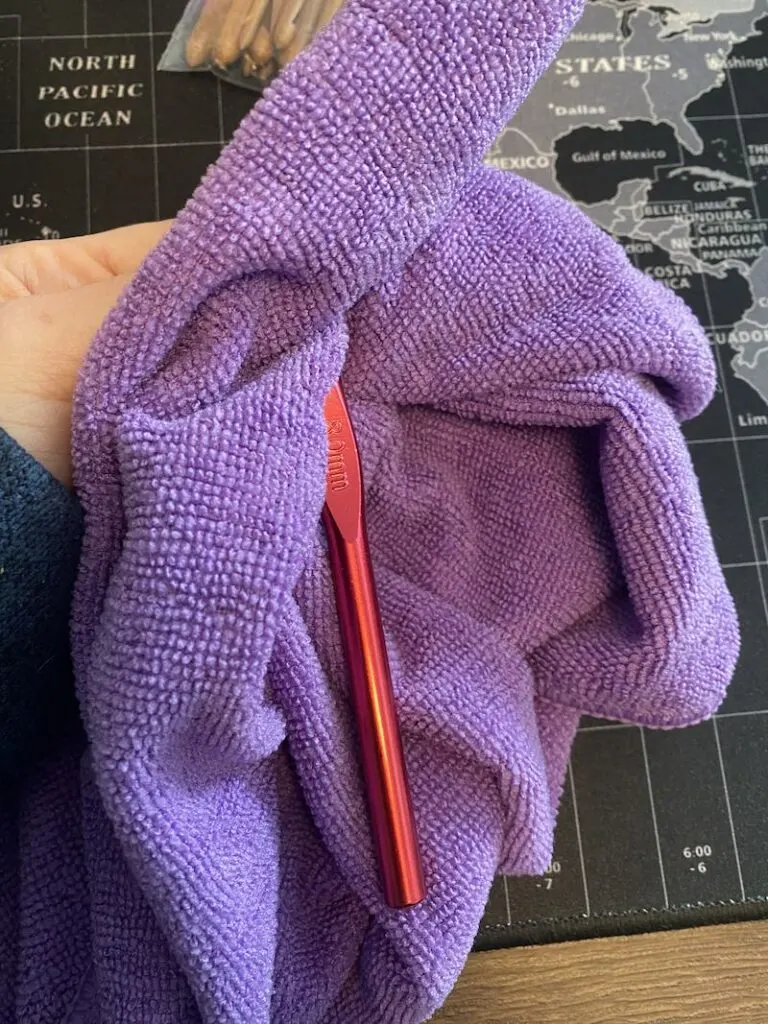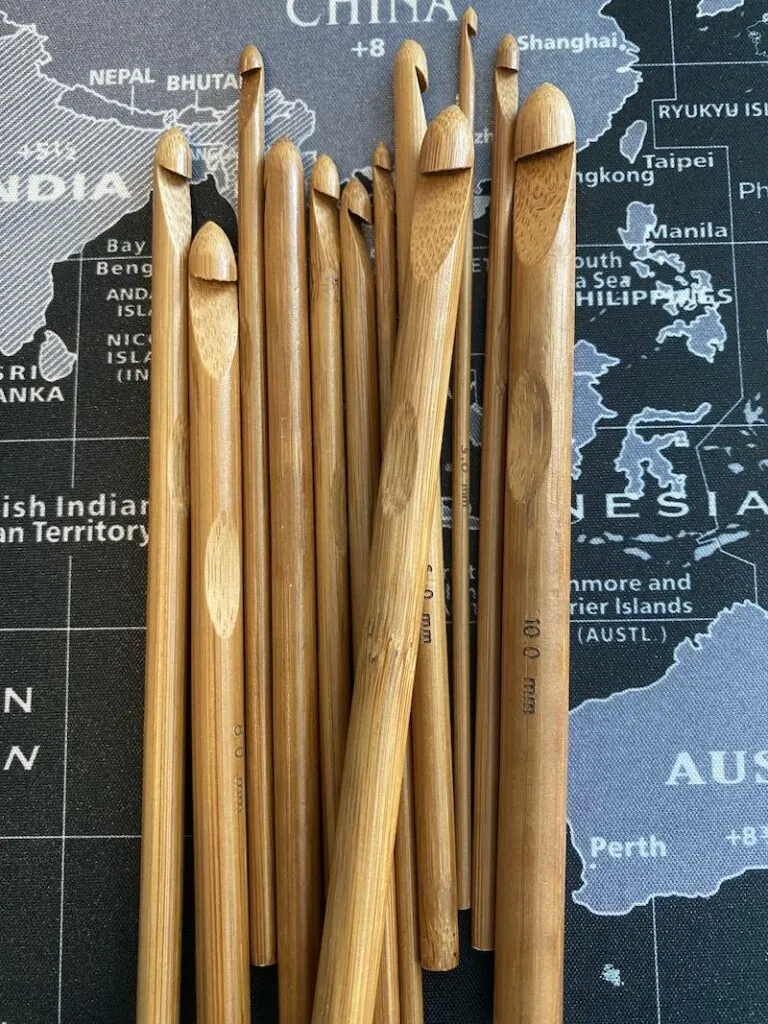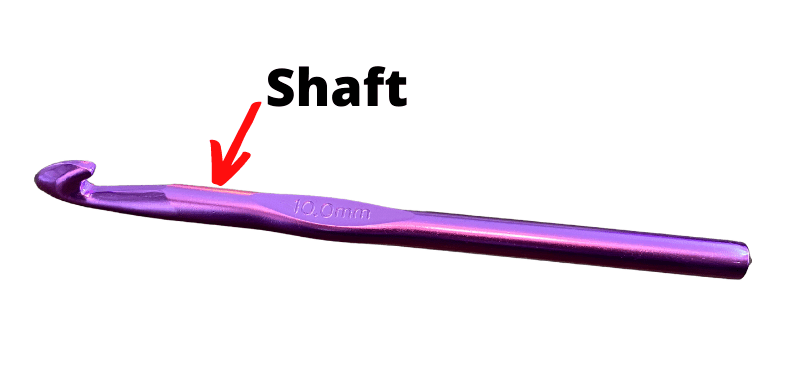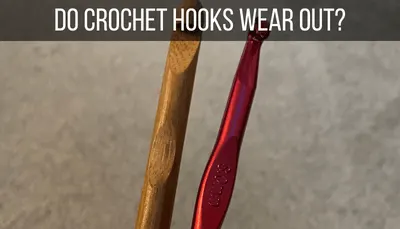You sit down for a relaxing crochet session and you feel like your hook is getting caught on every stitch. Instead of your yarn gliding nicely through your yarn, you feel like you’re fighting for it to move under, over, and around your crochet hook.
To make your crochet hooks glide more easily, start by checking your tension and making sure your stitches aren’t too tight. Next, clean your hooks to avoid buildup of oils and gunk from your hands. You can also apply a small amount of lotion to your hooks to soften them and help them glide.
There’s so much satisfaction that comes from getting to the rhythm of crocheting, stitch after stitch. It’s really hard to fall into this rhythm when you have a sticky crochet hook that gets caught on your yarn at every turn.
Luckily, there are a number of things you can do to make your crochet hooks glide more easily.
Check the Tension of Your Crochet Stitches
If your tension is too high and you’re creating your stitches too tightly, you’re going to have a hard time moving your crochet hook through your yarn. There needs to be enough space underneath your stitches for your crochet hook to easily fit and be able to create your next stitch.

Even though the tension of your crochet stitches isn’t related to the stickiness of your crochet hook itself, it’s a big reason why you may feel like your crochet hook isn’t gliding properly.
If there isn’t enough space for your crochet hook to glide, it’s not going to glide. Your dense crochet stitches will be hard to move through.
When your crochet stitches are too tight, you’ll also run into issues with your yarn feeling rough and stiff. Feel the difference between loose yarn and tightly pulled yarn. You’ll notice that the loose yarn is a lot softer and has more give than yarn that is pulled tight.
Ideally, you want to find a sweet spot where your crochet stitches aren’t too loose or too tight.
Personally, I find that the perfect stitch tension happens when I’m not even thinking about it. When I fall into a good crocheting rhythm, my crochet stitches are easy and natural. I’m not overly focused on creating stitches that are the perfect tension – it just happens.
If you find yourself trying too hard to achieve the perfect stitch tension…you’re trying too hard. Do your best to relax and see what tension you end up with when you stop overthinking your crochet stitches.
If you’ve been crocheting too tightly, it’s likely your crochet hook isn’t gliding properly because it’s getting stuck.
Clean Your Crochet Hooks
If you have older crochet hooks that suddenly aren’t gliding well, clean them gently with a damp cloth. This can remove any oils or buildup that has accumulated overtime and leave you with a newly rejuvenated crochet hook that slides more easily through your yarn.
It may sound gross but, if you’ve been using your crochet hooks for a long time, it’s likely they’ll have some amount of oil, dirt, and grime on them. We touch our crochet hooks a LOT. No matter how clean our hands are, the oils from our hands can transfer to our hooks overtime.
Not to mention the dirt, grime, and other mess that can wind up on our hooks. This can be an issue, especially if you travel with your hooks.
You may not be able to obviously see this buildup, but it could be enough to impact your crochet hook’s ability to glide through your yarn.
You don’t need to overdo it when cleaning your crochet hooks. Even just wiping them down with a damp cloth from time to time can be enough to bring your crochet hook back to working order.

For metal or plastic hooks, you can wash them with soap and water, if needed. Do NOT wash wooden crochet hooks though. Too much water exposure can damage them.
Make sure to dry your hooks off after cleaning them, especially if you have wooden hooks.
Clean crochet hooks not only feels good from a hygiene standpoint, but can also bring their wonderful glide back.
Wax Your Wooden Crochet Hooks
If you have wooden crochet hooks, waxing or polishing them can help restore them. Simply apply a small amount of needle wax or wood butter to your wooden crochet hook and see if that allows it to glide better through your yarn.
Wooden crochet hooks are beautiful and fun to use, but they require more maintenance than metal or plastic hooks. Every 6-12 months, it’s a good idea to wax or polish your wooden crochet hooks so they stay smooth.

There’s specific needle wax you can buy, or you can get general wood butter. Whatever you get, just make sure to follow the instructions and don’t overdo it.
Put Lotion on Your Crochet Hooks
If you have metal or plastic crochet stitches, apply a small amount of lotion to your crochet hook. This can make your crochet hook more smooth and glide more easily through your yarn. Be careful to only use a small amount of lotion and don’t overdo it.
To begin with, apply just a small amount of lotion to the shaft of your crochet hook. The shaft is the sloped area that connects to the hook itself. This may be enough to soften your crochet hook and allow it to glide more easily.

If you decide to apply lotion to the hook itself, make sure you don’t apply too much. You don’t want any lotion to build up underneath your hook and make a mess of your yarn.
After you’ve applied lotion to your hook, make sure to remove and wipe away any excess. Just a little bit of lotion goes a long way here.
A sticky crochet hook can ruin a relaxing crochet session. Whether you have wooden, metal, or plastic hooks, I hope these tips have helped you find a way to have your crochet hooks glide more easily and restore your relaxing crochet experience.

Diana has been an artist for over 27 years and has training in drawing, painting, digital drawing and graphic design. Diana’s latest obsession is digitally drawing with Procreate and Procreate Dreams. Diana has experience selling her art across a number of platforms and loves helping other artists learn how to make money from their art as well.



